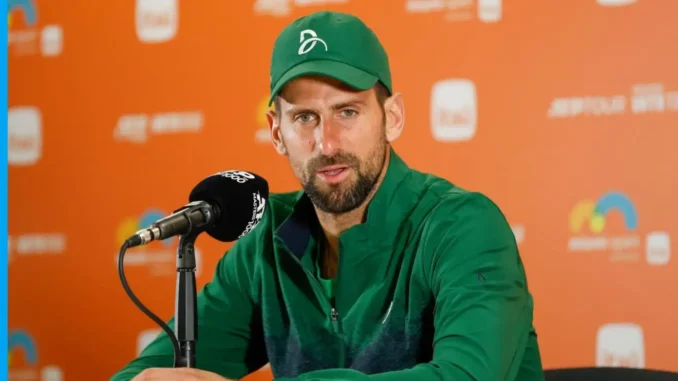
As the clay courts of Monte Carlo gleam under the Mediterranean sun, Novak Djokovic, the Serbian titan of tennis, is stepping into the 2025 Rolex Monte-Carlo Masters with a rare sense of restraint. The 37-year-old, who boasts an unparalleled 24 Grand Slam titles, isn’t brimming with his usual unshakeable confidence this time around. Fresh off a rollercoaster start to the year, Djokovic has candidly admitted that his expectations for this clay-court campaign are tempered, a stark contrast to the sky-high standards he’s set over two decades of dominance. With the tournament kicking off on April 6, 2025, the tennis world is abuzz, eager to see if the living legend can rediscover his magic on the red dirt.
Djokovic’s 2025 season has been anything but ordinary. Typically a juggernaut who storms out of the gate with titles in hand, he arrives in Monte Carlo without a single trophy to his name this year—a rarity that’s happened only once in the past six seasons. His journey so far has been a mix of near-misses and unexpected stumbles: a semi-final run at the Australian Open, a shocking third-round exit to then-world No. 123 Luca Nardi at Indian Wells, and a gritty but ultimately unsuccessful bid for the Miami Open title, where he fell to Jakub Mensik in a tight final, 7-5, 6-7(4), 7-6(5). “I found joy in my performance there,” he reflected on Miami, savoring the fight even if the silverware eluded him. Now, as he transitions to clay—a surface that’s both his proving ground and his nemesis—he’s keeping his sights grounded.
“My expectations are lower this time,” Djokovic confessed, his words carrying the weight of a champion who knows the grind of clay all too well. Monte Carlo, where he’s triumphed twice—in 2013, when he famously snapped Rafael Nadal’s eight-year reign, and again in 2015—hasn’t been kind to him in recent years. Since that last victory, he’s failed to advance beyond the quarter-finals in seven attempts, a statistic that gnaws at a player accustomed to rewriting record books. “The results I’ve had here in previous years weren’t great, and with how I’ve been playing this season, I’m taking it one match at a time,” he added, a hint of resolve beneath his humility. For Djokovic, this isn’t about immediate glory—it’s about building, brick by brick, toward a peak he hopes to hit at Roland Garros or even the Paris Olympics later this summer.
The Serbian’s connection to Monte Carlo runs deeper than most realize. It’s not just a tournament; it’s home. Having resided in Monaco for years, he’s woven his life into its fabric—both of his children were born there, and he’s logged countless hours on its courts, fine-tuning the relentless baseline game that’s made him a global icon. “I always love playing in Monte Carlo,” he said warmly. “It’s a place where I feel comfortable, surrounded by familiar faces.” Yet, that comfort comes with pressure. Clay, the most demanding surface in tennis, tests his patience and physicality like no other, and the weight of performing in a “home” environment only amplifies the challenge.
This year’s campaign brings fresh dynamics to the table. Djokovic is without his longtime coach Goran Ivanisevic, with whom he parted ways after a storied six-year partnership that yielded 12 Majors. Instead, his brother Marko is stepping in as a temporary guide, offering emotional support as much as tactical insight. “Marko helps me on a different level emotionally,” Djokovic noted, a nod to the familial bond bolstering him through this transitional phase. His draw isn’t forgiving either—lurking in his path is a potential second-round blockbuster against Stan Wawrinka, the Swiss warrior who stunned him in the 2015 Roland Garros final. A win there could set up a semi-final clash with defending champion Stefanos Tsitsipas or top seed Alexander Zverev, both hungry to assert their own clay-court credentials.
Despite the tempered outlook, there’s no mistaking Djokovic’s hunger. At 37, he’s chasing his 100th career title, a milestone that would further cement his legacy. His Miami run—where he practiced with Carlos Alcaraz, blending rivalry with mentorship—proved he’s still a force, even if the clay transition demands patience. “It’s about building my game on clay courts and trying to reach that peak again,” he emphasized, eyes fixed on the bigger prizes ahead. For now, he’ll start against either Roman Safiullin or a qualifier, a match he hopes will ignite the spark he needs.
As Monte Carlo unfolds, Djokovic’s journey promises intrigue. Can the man who’s defied time and expectations countless times before turn a “lower” outlook into another chapter of triumph? The clay awaits, and so does the world.
Leave a Reply